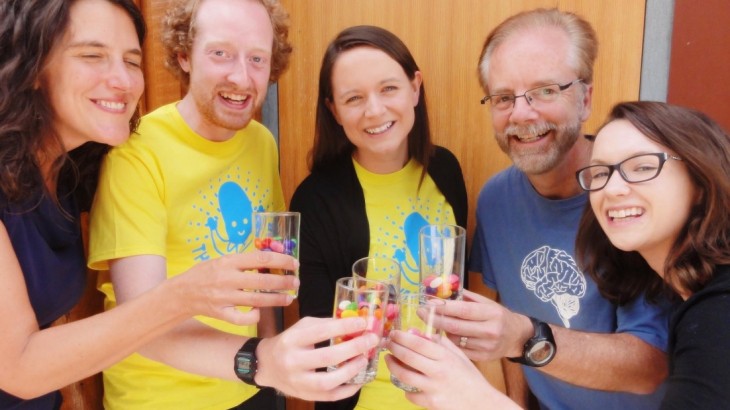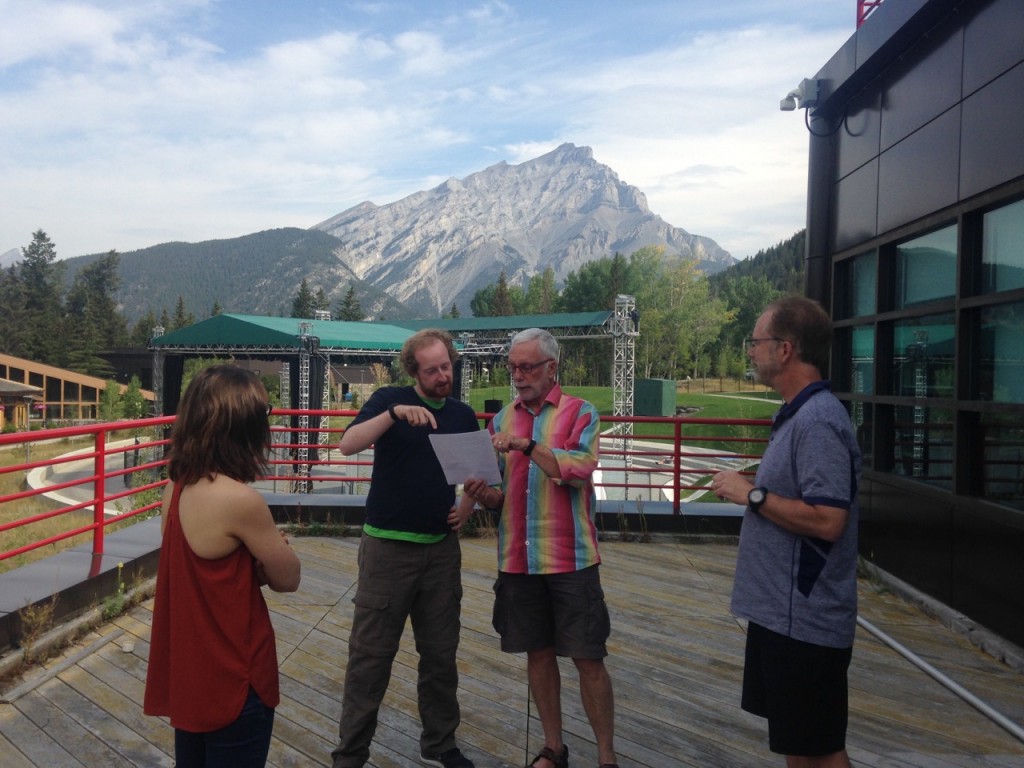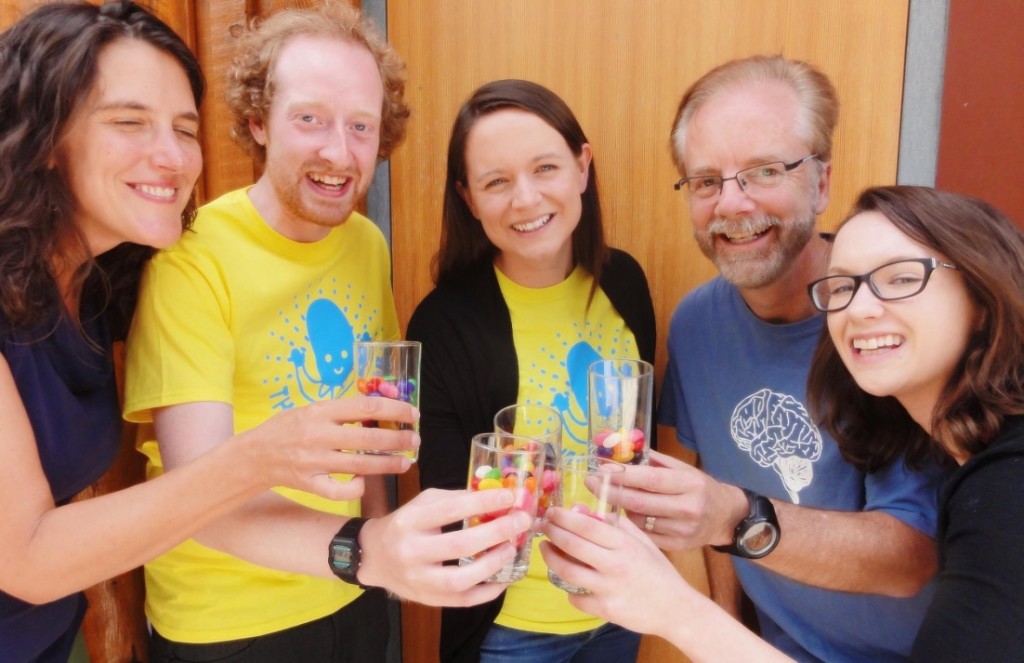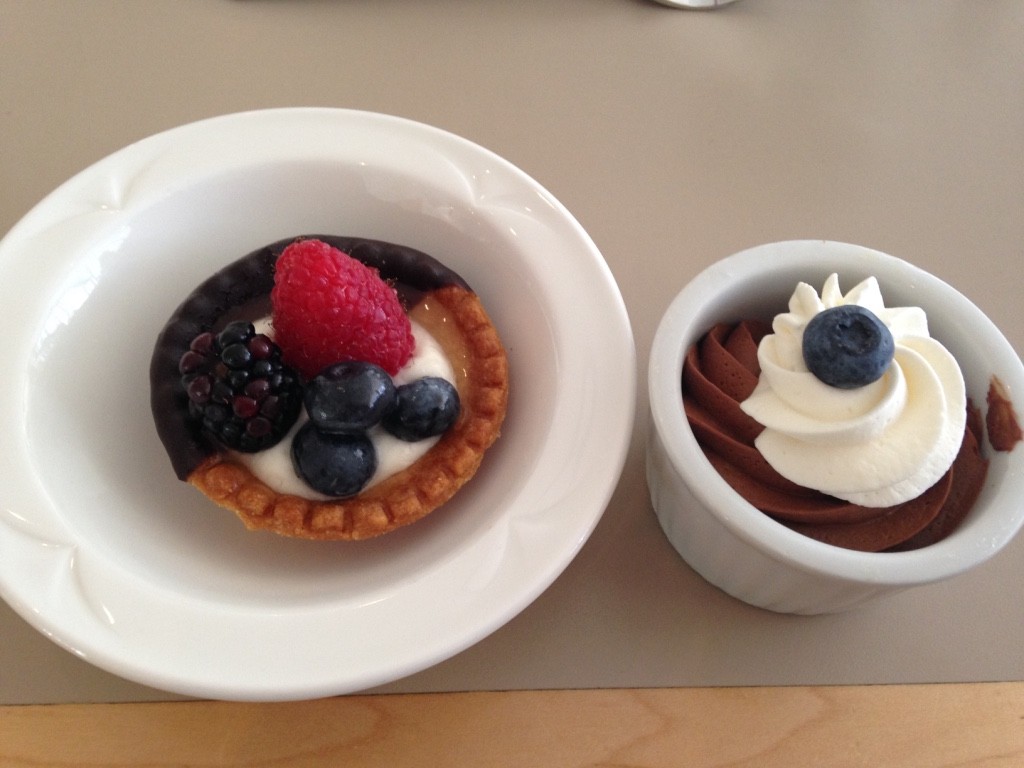Lindsay Jolivet, Health, Medicine & Veterinary Science co-editor, and Susan Vickers, Communication, Education & Outreach co-editor
In July 2015 we attended the Banff Centre’s Science Communications program. In this post we share some of our most memorable lessons from two weeks spent in this intensive course in the heart of the beautiful Rocky Mountains. We learned how to present coherently in front of a camera, distill research papers into great stories, produce video and podcasts, and pace ourselves when eating cake.
Commit to your creative concept
Whether you’re on stage performing improv, producing a video, or developing a science communications program, work hard to shape your creative vision, and then stick to it. Be ruthless about what fits and what doesn’t, and be confident and decisive in executing your idea. Committing to one idea is tough, but if you do it well the steps to achieving your goals begin to take shape, and your masterpiece will emerge!
Say ‘and’ not ‘but’
Mary Anne Moser, the director of the program, taught us the power of a positive attitude when she advised us to eradicate the word “but” from our vocabularies. Before you roll your eyes, take a moment to consider how you might build on an idea rather than contradict it. For example, let’s say someone wants to launch a blog about biology and you think that’s too broad. Consider suggesting a focus for the blog instead of criticizing the idea. Build, don’t tear down.**
Creative thinking works best with help
A white board and a team of enthusiastic people are as essential as your pen in science communication projects, and in most other creative efforts too. Working through a well-articulated – and fast – process to develop and execute a science communications project in Banff taught us that creativity is less about genius than it is about collaboration and focus.
Having a diversity of perspectives enriches projects, and having a range of expertise is essential.
Though it sometimes feels as though communicators are meant to be cell-phone videographers and photographers, podcasters, and writers all at once, the faculty’s leadership and the Banff Centre’s videographers, artists, editors, and technicians were an enlightening reminder of the power of pulling together as a team.
Working together to create a podcast with the beautiful Rocky Mountains as a backdrop
The only reason it’s not happening is you’re not doing it
Spending two weeks in Banff with mountains on all sides and nowhere to go is a great way to overcome personal obstacles. But seriously, joining an exercise that forces you to see a project through to completion, with little time to lollygag, helped us see what’s possible if you dive in. Sign up. Say yes. It might pinch a little, but you’ll forget that when you have a new skill, a great video, a blog or a new job – promise.
Science can be personal
Scientific writing is often very impersonal. Using “I” and “we” is frowned upon, with anonymous and faceless writing often being perceived as more professional and legitimate. Inserting yourself into a story can make it far more compelling and allows the reader to understand your feelings and opinions.
The more readers feel like they know you, the more likely they are to read your work and take an interest in it.
Know your audience
One of the most important questions to ask when developing a science communication project is, “Who is my audience?” It is easy to create ideas that interest and excite you, but you are not the intended audience. Before we started creating anything during the Banff program we would define who our audience was and why they would want to listen to our message. This also emphasized the importance of refining our message and eliminating jargon.
Science communicators come in all shapes and sizes
When our two weeks at Banff came to an end, more than one person could be seen holding back tears as we went ’round a circle and spoke about our favourite parts of the experience. One theme was nearly universal: the people on the course were amazing and we were all leaving with many new friends.
The surprising thing about this group, who all shared a common science communication goal, is how diverse it was. There were people from Tasmania, Poland, Germany, Scotland, the U.S. and Canada. We had writers, film-makers, students, academics, policy-makers, and teachers; introverts and extroverts; amazing ping pong players and terrible ping pong players; and people of all ages.
Combining so many different life experiences and skills resulted in projects that were exciting and unusual.
It is often easier to turn to the people around us for help and develop projects with those in the same line of work as ourselves, or who have very similar interests, but it can be a huge benefit to reach a little wider and collaborate with people outside your field.
Lindsay (right) and Susan (centre) celebrating a successful project presentation at Banff with the rest of their team.
All you can eat cakes make everything better
Our hard working days were interspersed with meals at the Banff Centre’s cafeteria, which included all-you-can-eat desserts. Mousse, cheesecakes, custards, strudels, pies, and chocolate cakes fueled our thinking. We maintain that sugar improves creativity. If anyone would like to conduct some scientific research to validate this “fact”, we are more than happy to volunteer as research subjects.
Some of the cakes from the all-you-can-eat cake bar!
*Photos: Susan Vickers, used with permission. All rights reserved.
** EDITOR’S NOTE (3/3/2016) : Thank you to Peter Newbury for pointing out that we used ‘but’ in the “Say ‘and’ not ‘but” paragraph not once, but twice! We have edited the paragraph so it follows Mary Anne’s advice.








Thanks for sharing these lessons with us. I want to go even more!
Did you notice there are 2 very prominent “but” in your paragraph about “and not but”. The lesson reads just as well, perhaps even more supportive, with “and”: “Roll your eyes if you really need to, *and* take a moment at your next meeting before you contradict an idea” This makes it sound like you’re doing something helpful as you think of ways to contribute and support your colleagues. “Let’s say someone wants to launch a blog about biology, *and* you think that’s too broad.” Now you’re about to offer some helpful advice.
“And” fosters collaboration; “but” judges. More of the former *and* less of the latter 😉
Peter
Thank you Peter. The offending buts have been removed and we have resolved to pay more attention to the advice we are sharing next time!